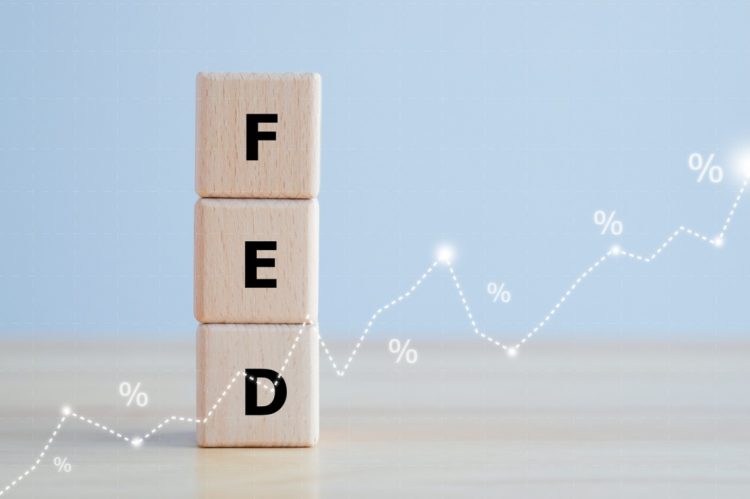An unsurprising 25-basis-point rate hike announced by the Federal Reserve today–something that real estate economists urged against–is placing the housing market in an advanced state of limbo, with mixed data signals leaving both policymakers and pundits divided on the probable path of the economy.
After a “pause” on rate increases in June–the first time the Fed met since February of 2022 without raising rates–chair Jerome Powell left little doubt that the central bank would choose to bump rates up at least one more time this year, pushing the flagship fund rate to around 5.5%, its highest level in more than two decades.
But with economists increasingly worried that restrictive policy could tip the country into recession, the question of next steps remains increasingly fraught, with Powell indicating that he is still considering rate hikes on a meeting-by-meeting basis.
“I would say it is certainly possible that we would raise funds again at the September meeting if the data warranted, and I would also say it is possible that we would choose to hold steady at that meeting. We will be making careful assessments,” Powell said at a press conference following the meeting.
Despite being repeatedly pressed by journalists on how the central bank would approach future meetings–whether the committee would only consider rate hikes every other meeting, for instance–Powell offered very little, besides pointing out that they will have two months of economic data by the next Federal Open Market Committee (FOMC) meeting.
“We haven’t made any decisions about any future meetings,” he said. “I would say the inter-meeting data came broadly in line with expectations…the June CPI report was welcome, but it’s only one report, one month’s data.”
Powell did say that he saw it as very unlikely that the committee would cut rates anytime this year, adding that reaching the central bank’s inflation target of 2% inflation will likely be reached in 2025.
Dr. Lisa Sturtevant, Bright MLS chief economist, has cautioned for months that the risk of an overcorrection by the Fed is growing as inflation falls and the housing market wobbles. In a statement following this latest rate hike, she said the potential for major job losses is the most urgent concern for the health of the real estate industry.
“It remains uncertain whether the Fed is going to raise rates again this year, but if they do there is a real risk that they will overshoot, weakening the labor market and sending the economy into recession,” Sturtevant explained. “Rising unemployment rates and job losses is the biggest risk to the housing market, which has so far been extremely resilient in the face of higher rates.”
After many economists predicted a housing crash following a historically fast pace of rate hikes through early this year, most markets remained surprisingly resilient despite overall depressed sales. The labor market also surprised with its resilience, adding an average of 240,000 jobs over the last several months, offering hope that the Fed could successfully navigate the fight against inflation without collateral damage.
Danielle Hale, Realtor.com chief economist, said in a statement that despite inflation falling to 3%, Powell and the Fed appear wary of a reversal.
“Today’s hike cements the idea that the Fed is primarily focused on taming inflation and bringing it back to the 2% target,” she said. “I expect chair Powell to express hope that the latest inflation data signal a new trend, which would raise the odds for a soft-landing…at the same time, I expect chair Powell to insist that the Fed remains vigilant, which will likely mean that rates remain high for a bit longer, just in case this reading turns out to be an aberration.”
Hale added that high mortgage rates are also contributing to an inventory crisis, with homeowners locked in at low rates waiting for a better mortgage opportunity on their next home.
Dr. Lawrence Yun, chief economist of the National Association of REALTORS®, earlier this year spoke out against further rate hikes when the fund rate was still below 5%. Following this latest hike, Yun said in a statement that while the direct impact might be minimal, he still disagreed with the overall sentiment the Fed was projecting on the economy.
“The Fed, unfortunately, is still using language based on the lagging indicators of ‘robust’ jobs and ‘elevated’ inflation. The fed funds rate is now 2 percentage points higher than inflation, a rare and very tight monetary policy condition,” Yun pointed out. “All the while, because of higher interest rates, home sales have fallen, businesses are cutting back on investments, and community banks are under stress.”
For months, Powell made it clear that he saw the threat of runaway inflation as a greater risk than the potential of a recession or damage to the labor market, even as spiraling mortgage rates battered housing, which makes up a huge portion of economic activity. He has faced pointed questions from both journalists and members of congress regarding whether the Fed is purposefully trying to put people out of work as part of the inflation fight.
But this meeting, Powell claimed he has always been hopeful that inflation can be tamed without “a really significant downturn.”
Asked directly whether he saw the chance of a recession as becoming less likely, Powell said independent Fed projections no longer forecasted a recession at the end of this year.
“It’s a long way from assured and we have a lot left to go to see that happen,” he added.












